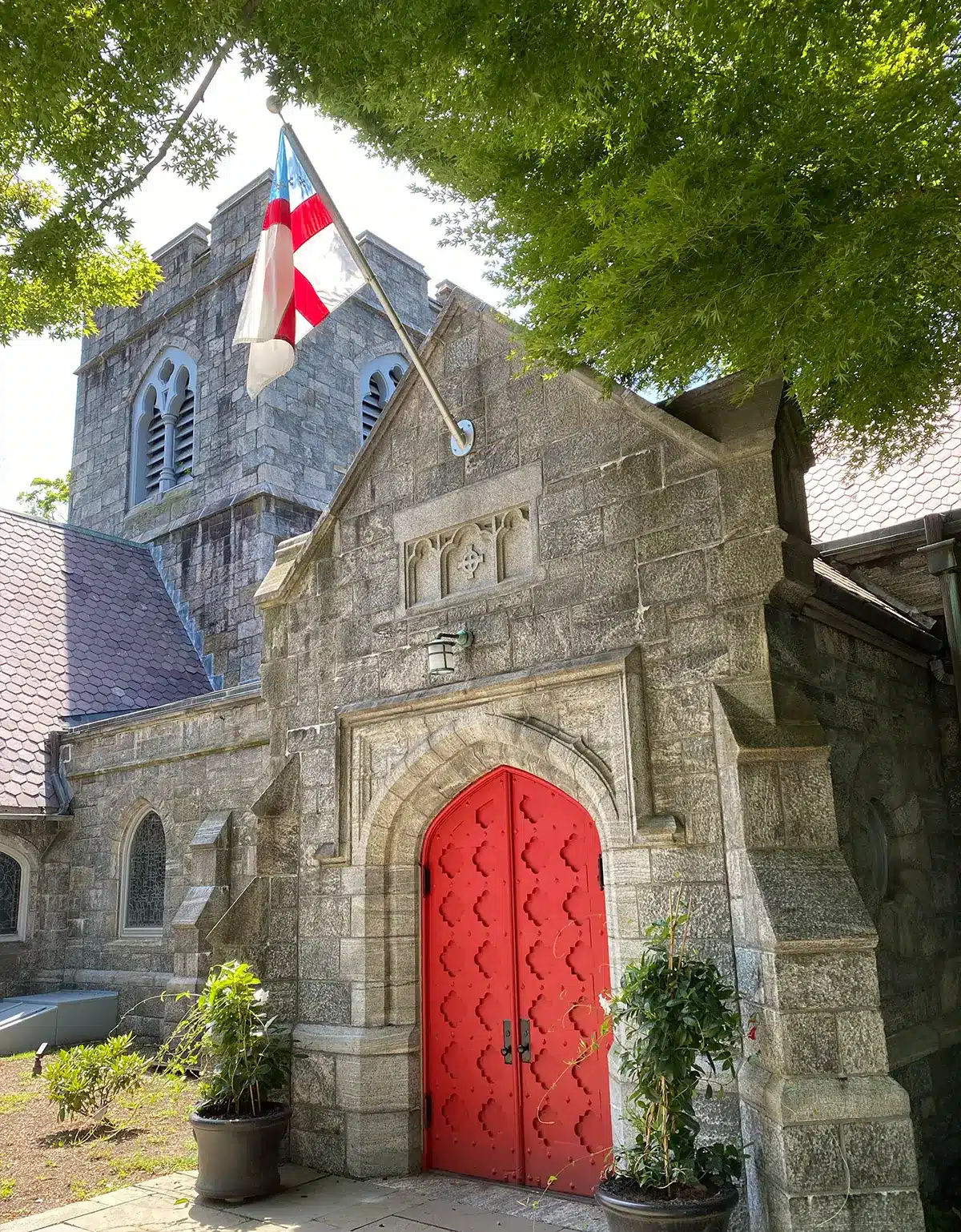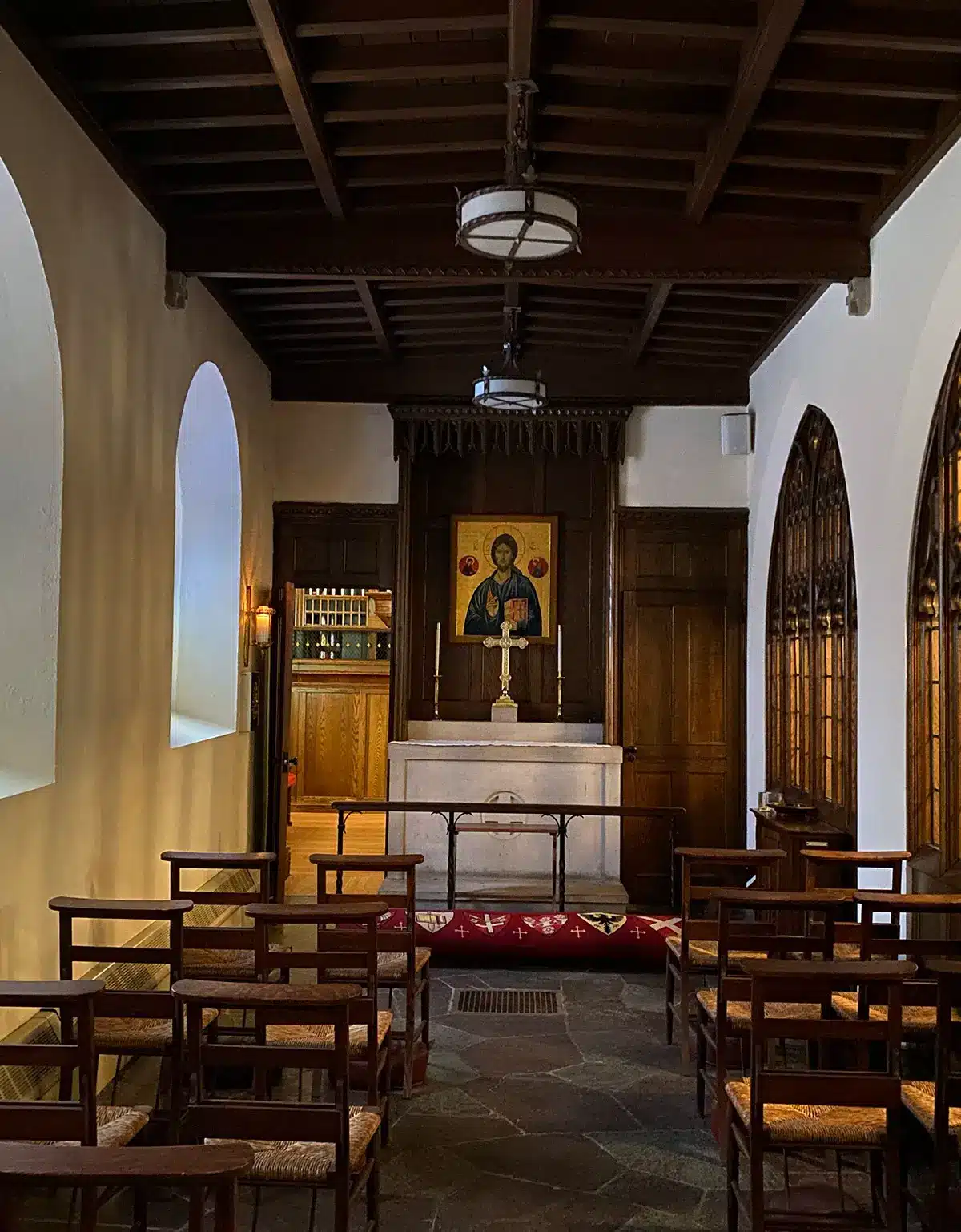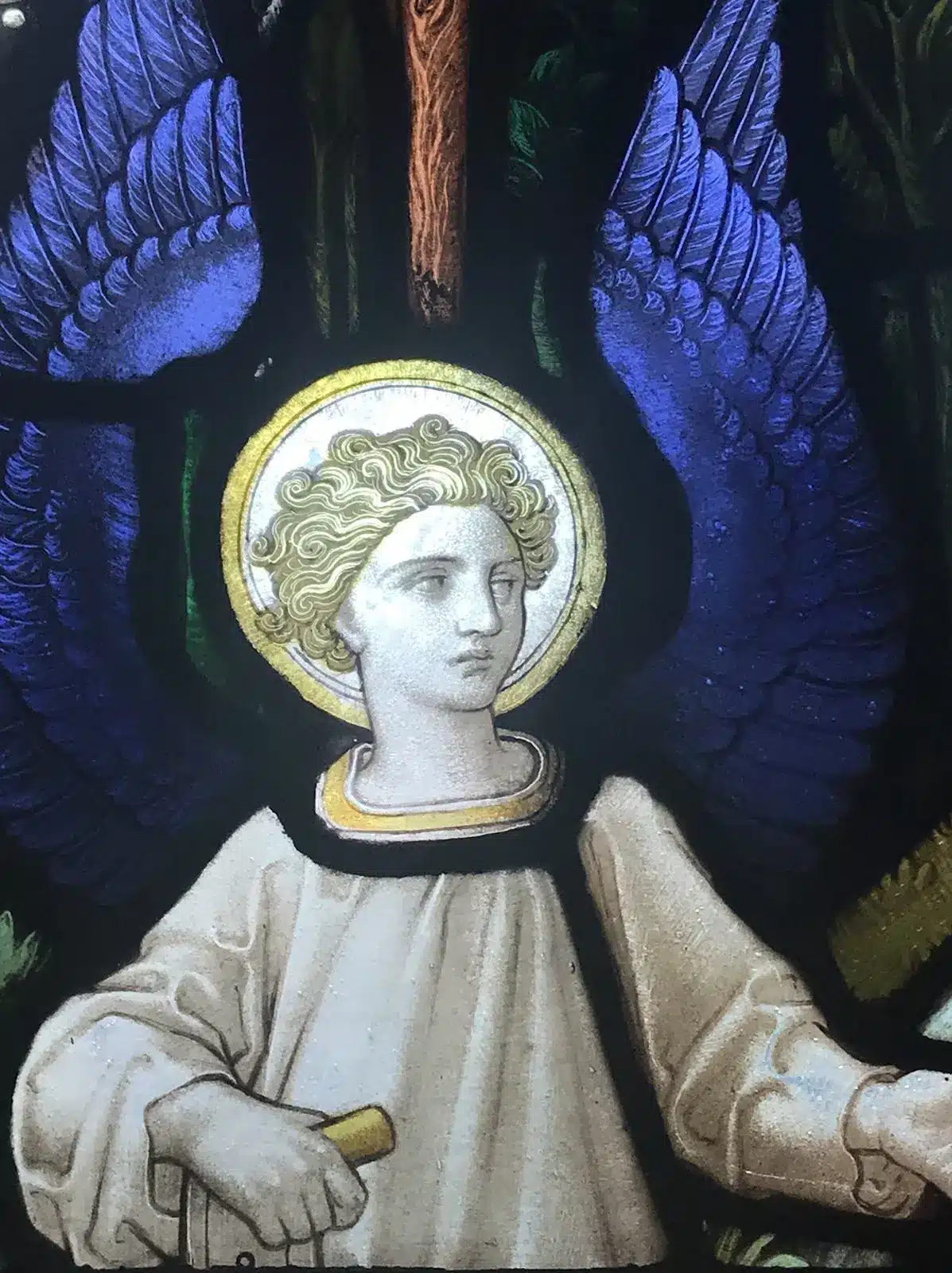The history of St. Barnabas is woven into the fabric of the village of Irvington and into the lives of renowned figures, such as The Rev. Prof. John McVickar, D.D (1787-1868), founder of the original chapel school and parish, his close friend Washington Irving (1783-1859), beloved early American writer, Gen. Phillip Schuyler the grandson of the Revolutionary War general of the same name, and Isabel K. Benjamin (1871-1961), known affectionately as, “A First Lady of Irvington,” after whom the village community center is named.
The original Chapel School was dedicated in 1853 and began the transition into a parish church in 1858. Hence, countless generations of parishioners not named among the “Great and the Good” have shared their greatness and their goodness in countless ways that have woven God’s love into the fabric of who we are today as a church community.


It hardly goes without saying that the architecture of a church shapes the spirituality and “feel” of a congregation over time. The physical proportions of St. Barnabas, designed by the aforementioned, John McVickar, are based on St Martin’s Church in Canterbury, a 6th-century structure that is the oldest church in continuous use in England today. The church is in the Gothic Revival style with many interesting features.
By the early 1860’s the chapel school building had become too small for the congregation. In 1863 Renwick & Sands, the firm of James Renwick Jr., were commissioned to add the square Norman tower, transepts and chancel which today forms the nave, the main body of the church where the majority of the congregation sit.
The church’s seventeen stained glass windows are very much its “crown jewels” casting colorful hues across various parts of the sanctuary throughout the day. The windows themselves date from 1880 to 1999 and were added from different makers, including the first of two Tiffany windows, in 1896. Other notable American makers are represented in the collection including LaFarge and Lamb studios adding an abundance of beauty to the graciously light and somewhat intimate sanctuary. Thanks to an outpouring of generosity from parishioners and friends of the parish all the windows were restored by Femenella and Associates of New Jersey in 2018.
Other notable features include the lych gate built and parish hall added in 1902. The latter was designed by local architect Albert J. Manning, who also built the village hall. The next addition was the Luke Memorial Chapel added to the north side of the sanctuary, designed by Delano & Aldrich and built in 1945. The office and Sunday school wings were added in 1960’s to complete the overall footprint of the church.
